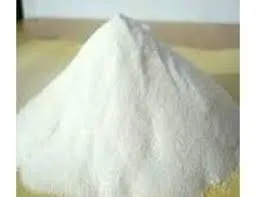
Nov . 20, 2024 03:59 Back to list
hydroxyethyl cellulose structure
The Structure and Applications of Hydroxyethyl Cellulose
Hydroxyethyl cellulose (HEC) is a water-soluble polymer derived from cellulose, the most abundant organic polymer on Earth. This versatile compound has gained immense popularity across various industries due to its unique physical and chemical properties. The structure of HEC is a critical factor that contributes to its functionality and wide-ranging applications.
Chemical Structure of Hydroxyethyl Cellulose
Hydroxyethyl cellulose is synthesized from cellulose through a chemical modification process. The primary structure of cellulose consists of a linear chain of D-glucose units linked by β-1,4-glycosidic bonds. In the case of HEC, hydroxyethyl groups (-CH2CHOH-) are introduced into the cellulose chains. The degree of substitution (DS), which refers to the average number of hydroxyethyl groups per glucose unit, is a crucial aspect of the structure. Generally, a higher DS results in increased solubility in water and affects the viscosity and gel-forming ability of the polymer.
The molecular weight of HEC can also vary significantly, which influences its rheological properties. Hydroxyethyl cellulose typically exhibits a high molecular weight, allowing it to form viscous solutions when dissolved in water. The balance between the degree of substitution and molecular weight is vital in tailoring HEC for specific applications.
The Colloidal Properties of HEC
One of the defining characteristics of hydroxyethyl cellulose is its ability to form colloidal solutions. When HEC is mixed with water, it swells and dissolves, leading to the formation of a viscous solution. This solubility is due to the hydrogen bonding and hydrophilic nature of the hydroxyethyl groups, which interact favorably with water molecules. The amphiphilic nature of HEC allows it to stabilize emulsions and foams, making it an ideal additive in many formulations.
The rheological behavior of hydroxyethyl cellulose is non-Newtonian, particularly exhibiting shear-thinning properties. This means that its viscosity decreases under shear stress, which is advantageous for applications requiring easy handling and application. For instance, in the cosmetic industry, HEC is often used as a thickening agent in gels and creams, where it provides a desirable texture and stability without compromising ease of use.
Applications of Hydroxyethyl Cellulose
hydroxyethyl cellulose structure

The unique structure and properties of hydroxyethyl cellulose make it suitable for a broad range of applications across various sectors
1. Cosmetics and Personal Care HEC is commonly used as a thickener, stabilizer, and film-forming agent in lotions, hair conditioners, and shampoos. Its ability to enhance texture and provide stability to formulations makes it a popular choice among cosmetic chemists.
2. Pharmaceuticals In the pharmaceutical industry, HEC serves as an excipient in drug formulations. It can improve the solubility and bioavailability of poorly soluble drugs. Additionally, HEC is often employed in controlled-release formulations due to its gel-forming capabilities.
3. Construction HEC is used as a viscosity-modifying agent in cement-based materials. It improves workability, enhances adhesion, and reduces water loss during the curing process. Additionally, HEC's water retention properties help in maintaining moisture levels for proper curing.
4. Food Industry HEC acts as a thickener and stabilizer in various food products. Its ability to retain moisture and improve texture makes it an attractive option for formulators looking to enhance the quality of food products.
5. Environmental Applications HEC has also found applications in the field of environmental science. It is used in coatings and formulations intended for soil stabilization and water retention, making it relevant in agriculture.
Conclusion
The structure of hydroxyethyl cellulose plays a pivotal role in its functionality and suitability for various applications. Through its unique molecular characteristics, HEC has established itself as a valuable polymer in industries ranging from cosmetics to pharmaceuticals and construction. As research continues to uncover new properties and potential uses, hydroxyethyl cellulose is poised to remain an essential compound in both existing and emerging technologies. With its diverse applications and the ability to be tailored for specific needs, HEC exemplifies the significance of understanding polymer chemistry in modern material science.
-
Versatile Hpmc Uses in Different Industries
NewsJun.19,2025
-
Redispersible Powder's Role in Enhancing Durability of Construction Products
NewsJun.19,2025
-
Hydroxyethyl Cellulose Applications Driving Green Industrial Processes
NewsJun.19,2025
-
Exploring Different Redispersible Polymer Powder
NewsJun.19,2025
-
Choosing the Right Mortar Bonding Agent
NewsJun.19,2025
-
Applications and Significance of China Hpmc in Modern Industries
NewsJun.19,2025







